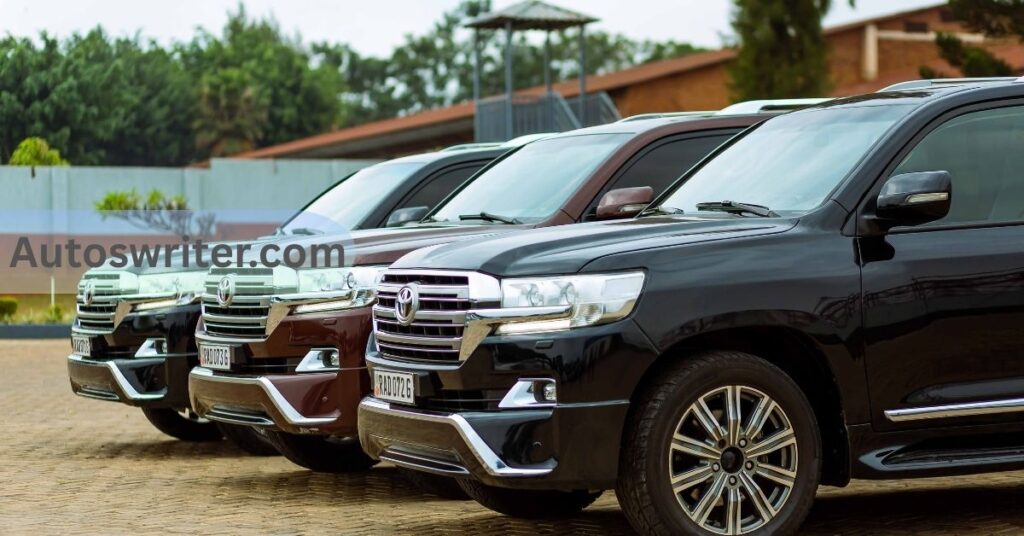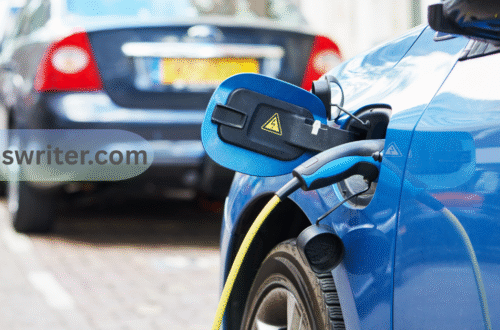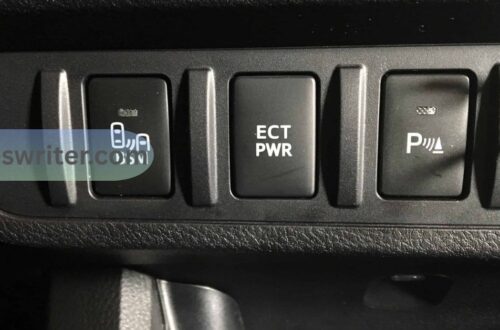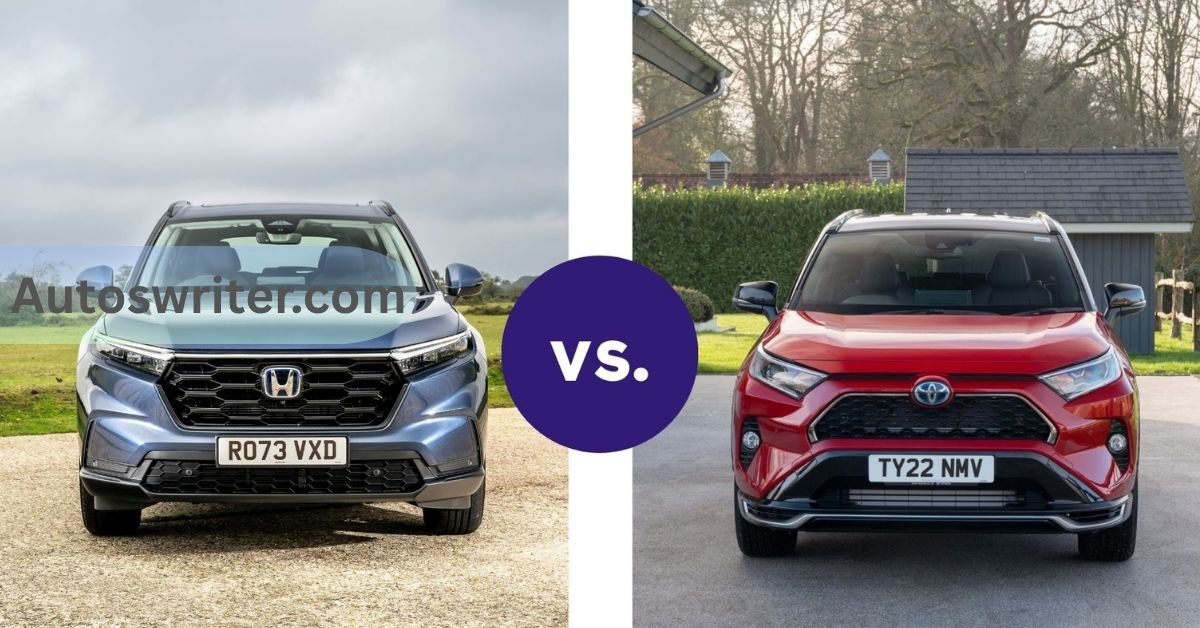Unleaded 88 (often called “E15” or “88 octane”) is gasoline blended with 15% ethanol (and 85% gasoline). It has about 88 octane instead of 87. Because it has more ethanol, Unleaded 88 has slightly less energy per gallon than regular gas but is often cheaper.
The U.S. DOE/EPA says E15 is approved for all cars (gasoline-powered) from model year 2001 or newer. However, you should always refer to your Toyota’s owner’s manual.
Image: A gas pump offering E85 (yellow nozzle), E15 (“Unleaded 88”, blue nozzle), and regular E10 (black nozzle). E15 is a 15% ethanol blend and has an octane rating of approximately 88.
What Is Unleaded 88 (E15)?
1. Ethanol blend:
Unleaded 88 is an E15 fuel, meaning it contains up to 15% ethanol and 85% gasoline. Regular gasoline is typically E10 (approximately 10% ethanol). In other words, Unleaded 88 has 5% more ethanol than standard 87-octane fuel.
2. Octane rating:
The extra ethanol raises the octane to roughly 88 (hence the name). Regular E10 gasoline is about 87 octane. Unleaded 88’s octane is higher, but this does not mean it will boost performance in an engine tuned for 87 octane.
3. Energy content:
Ethanol contains less energy per gallon than gasoline. Adding ethanol raises octane but lowers the total energy. In practical terms, most tests show very little difference in mileage between E15 and regular fuel. National labs found that E15’s fuel economy is only about 1–2% lower than E10. (For a car doing 30 MPG on E10, that would be roughly 29.4 MPG on E15, a change too small to notice for most drivers.)
How Is Unleaded 88 Different from Regular 87?
1. Composition:
Unleaded 88 contains up to 15% ethanol, whereas regular 87-octane fuel (E10) has about 10% ethanol.
2. Octane:
The higher ethanol content results in a higher octane rating (~88 vs 87). (Many gas stations label the E15 fuel as “Unleaded 88” or “E15” to note the octane.)
3. Labeling:
By law, any pump dispensing E15 must display a black-and-orange label warning that it contains E15 (up to 15% ethanol) and advising against its use in engines older than 2001, motorcycles, boats, or lawn equipment. In practice, “Unleaded 88” pumps are often colored or marked differently (for example, some stations put E15 on a blue handle).
4. Price:
Unleaded 88 usually costs less per gallon than regular gas. Retailers often price E15 10–40 cents cheaper per gallon to encourage its use. For example, one news report noted that E15 was about 10¢/gal more affordable at certain Midwestern stations, and Sheetz often runs special promotions (e.g., a 40¢/gal discount on Unleaded 88). If the price difference is significant enough, it can outweigh the slight loss in fuel economy resulting from the extra ethanol.
5. Fuel economy:
Because ethanol has lower energy content, E15 yields slightly worse mileage per gallon (MPG). Studies show the drop is small (around 1–5%). In one example, researchers noted that a car achieving 30 MPG on a regular fuel would drop to about 28.5–29.7 MPG on E15. In short, you might go a mile or so less per gallon. Most drivers find the difference hard to notice.
Toyota’s Recommendations (Manuals & Warranty):
Toyota’s official guidance has evolved. Historically, Toyota designed its cars for fuel containing no more than 10% ethanol (E10). Older Toyota owner’s manuals explicitly state that gasoline with up to 10% ethanol can be used. For example, a 2005 Tacoma manual notes that Toyota “allows…oxygenate blended gasoline where the oxygenate content is up to 10% ethanol or 15% MTBE”.
Likewise, a joint statement from Toyota stated that their vehicles were only designed for up to 10% ethanol and that using fuel with an ethanol content above E10 is not recommended. Toyota even said that it “cannot recommend” fuel with more than 10% ethanol for current vehicles on the road. Under warranty terms, Toyota will not cover damage resulting from the use of fuel exceeding this limit.
However, newer Toyota models (roughly from 2020 and later) now often display “up to 15% ethanol” in their fuel specifications. Some Toyota digital manuals (for 2024–2025 models) state: “Use only gasoline containing up to 15% ethanol.
Do NOT use any fuel with more than 15% ethanol (such as E30, E50, E85)….” (This wording appears in recent Prius and RAV4 manuals, for example). In other words, Toyota seems to have updated its guidance to permit the latest cars to operate on E15 fuel without voiding the warranty while still prohibiting the use of E30 and E85.
Bottom line: For older Toyotas, the safe rule was “E10 max.” For the newest Toyotas, up to E15 may be allowed. Always check your owner’s manual or gas cap. If it says “up to 15% ethanol (E15),” you can use Unleaded 88. If it says “up to 10% ethanol” or doesn’t mention E15, stick to regular gas.
Also Read: What are Lifters on a 2006 Toyota Sequoia-Everything You Need to Know
Compatibility Across Toyota Models:

Most modern gasoline Toyotas share similar fuel rules:
1. Sedans (Camry, Corolla, etc.):
Newer Camry and Corolla manuals generally specify regular 87-octane (unleaded) fuel and mention ethanol limits. If your manual says “up to 15% ethanol,” E15 is allowed; if it says 10%, avoid E15. For example, one Toyota manual excerpt notes, “use only gasoline containing up to 15% ethanol” in recent models. If in doubt, follow the instructions in the manual.
2. SUVs (RAV4, Highlander, 4Runner, etc.):
The same rules apply. The new RAV4 and Highlander models now allow E15, as indicated on their fuel information pages. Older ones (especially those before ~2015) likely specify E10 as the maximum. For example, some RAV4 owners on forums noticed the instruction “Use only gasoline containing up to 15% ethanol” in their manuals.
3. Minivans (Sienna, etc.):
Older Siennas (before 2011) have an E10 maximum. Newer models (especially hybrids) likely say up to 15%. Anecdotally, some Sienna drivers have tried E15 and reported regular operation; however, please verify your vehicle’s year to ensure compatibility.
4. Trucks (Tacoma, Tundra):
As shown above, a 2005 Tacoma manual had an E10 maximum. Tundras from ~2020 may list E15 as acceptable. However, note that only particular Toyota trucks (flex-fuel Tundra/Sequoia) can use E85. Non-flex-fuel models should not use E85 at all but may use up to E15 if allowed.
Real-world owners report mixed results. Some Toyota drivers found that their car “seems to run fine on Unleaded 88” with no apparent issues. Others say they saw no change in MPG after trying E15 for a tank or two. However, some also note that if the price difference is small, the slight drop in MPG makes E15 not worthwhile. The safest approach is: “Use what the manual says.” If Toyota says E15 is okay, you’re good to go; if it only specifies E10, it’s best to avoid E15.
Effects on Fuel Economy, Performance, and Engine:
1. Fuel Economy:
As noted, ethanol has about 30% less energy than gasoline. More ethanol in the tank means worse mileage. Studies (and fundamental drivers) show the drop is typically small – on the order of 1–5%. In other words, if you usually get 30 MPG, switching to E15 might drop your mileage to around 28–29 MPG. Many tests find the difference to be “virtually undetectable,” especially under varied real-world driving conditions. If your MPG meter is accurate enough, you might see a few tenths of a mile less per gallon.
2. Performance:
The higher octane of E15 means engines are less likely to knock under heavy load, but most Toyota engines already run fine on 87 octane. You should not expect any horsepower gains from using Unleaded 88. If anything, you might experience less acceleration due to the lower energy content. In practice, many drivers report no noticeable change in power or engine behavior. (One Tundra owner said filling up with E15 gave the “same MPG” as 87, implying no performance loss.)
3. Engine & Long-Term Effects:
Modern fuel systems are built to handle up to E15 (if permitted). Short-term use of Unleaded 88 in a compatible Toyota should not hurt the engine. Ethanol burns cleaner and can help flush some deposits from fuel injectors. Some users have even remarked that their engine runs “smoother” or quieter with E15 (perhaps due to the fuel’s cooling effect), though this is subjective.
However, there are concerns if a vehicle isn’t designed for higher ethanol. Toyota has warned that moving from 10% to 15% ethanol is a 50% increase in alcohol content in the fuel. For older engines not designed for it, this could, over time, lead to issues such as corrosion of fuel system parts or dried-out seals.
Toyota’s official stance (as of the mid-2010s) was that they could not fully evaluate the long-term effect of E15 on the “legacy fleet” of cars, and so did not recommend it. As a precaution, if your Toyota is older or not rated for E15, using it extensively could risk damage to the fuel system or void your warranty.
In summary, when a Toyota is rated for E15, the short-term effects are minimal, with a slight increase in fuel efficiency (MPG) and no change in normal performance. There’s no known unique engine damage from one tank of E15 in a compatible car. But for long-term health, always follow Toyota’s ethanol limit, as excessive ethanol can harm fuel system components over time.
Also Read: What is a with a Circle in Toyota-Everything You Need to Know
EPA Guidance and Fuel Labeling:
The EPA has specific rules about E15 (Unleaded 88):
1. 2001+ vehicles:
EPA approved E15 for use in all gasoline cars and light trucks from model year 2001 and newer. By law, any pump that sells E15 must display a label indicating up to 15% ethanol and warn non-eligible vehicles.
2. Pump labels:
E15 pumps have a black-and-orange label that lists who can use them. The label explicitly warns against using E15 in cars older than model year 2001, as well as in motorcycles, off-road vehicles, boats, and lawn equipment. In short, only 2001+ cars should fuel with Unleaded 88.
3. Legal requirements:
Misfueling (putting E15 in a non-approved engine) is prohibited. Fuel stations must also display signage, such as “E15 – Up to 15% ethanol,” and often label the grade as “Unleaded 88.”
The DOE (Department of Energy) confirms that E15 “is approved for use in model year 2001 and newer light-duty vehicles”. They note that E15 does not qualify as an alternative fuel under the EPA (just like regular gas) but helps meet renewable fuel standards.
If you see an “E15” label at the pump or the octane is 88, ensure your Toyota is from the 2001 model year or newer and ideally listed as compatible. The EPA label and the fuel pump should clearly state “E15” or “Unleaded 88” to ensure accurate identification. If a pump is not labeled (for example, some older stations might not have E15 labels), assume it’s not E15.
When to Avoid Unleaded 88:
Even if the E15 is generally fine for newer vehicles, there are times you should avoid the Unleaded 88:
1. Older vehicles (<2001):
EPA forbids E15 in pre-2001 cars. Older Toyotas (and other brands) may have weaker engine controls, and their fuel systems are often not designed for higher ethanol content. Don’t use E15 in a Toyota (or any car) older than 2001.
2. Small engines and specialty engines:
Never use Unleaded 88 in motorcycles, boats, lawnmowers, snowmobiles, chainsaws, or other small engines. These engines usually tolerate only up to E10.
3. Vehicles with strict ethanol limits:
If your Toyota’s manual or fuel filler cap says “E10 only” or “up to 10% ethanol,” do not put E15. This could damage your engine or void your warranty.
4. Diesel or Flex-Fuel engines:
Diesel engines cannot use E15 at all. Flex-fuel Toyotas (Tundra/Sequoia FFVs) can use up to E85, but if you have a regular gas Toyota, stick with gasoline.
5. No price advantage:
If Unleaded 88 is only a few cents cheaper than 87, it may not be worth it. Remember, you’ll burn a bit more fuel. For example, if you only save 5¢/gal, you might lose money if it cuts your MPG by more than that percentage. It only makes sense to use Unleaded 88 if the price discount is enough to offset the ~3–5% fuel economy hit.
6. Warranty concerns:
If your Toyota is still under warranty, exercise caution. Toyota’s warranty terms (unless updated for your specific model year) generally exclude damage caused by the use of improper fuel. If you use E15 against manual advice and a fuel-related failure occurs, it may not be covered under the warranty.
In summary, avoid Unleaded 88 unless your car is 2001 or later and explicitly allowed by Toyota. And use it only when it saves you real money.
Pricing and When It’s Worth It:
Unleaded 88 is usually cheaper per gallon than regular 87-octane gas, often by about 10–30 cents. Retailers price it lower to encourage use. For example, Sheetz has run promotions with 40¢ off per gallon of E15. Some other stations may offer a smaller discount (10–15¢).
Whether this is worth it depends on your driving and vehicle:
1. Fuel economy loss:
If your Toyota achieves 30 MPG on E10, it may drop to ~29 MPG on E15. That’s a ~2% drop. To break even, E15 needs to cost at least 2% less per mile. Roughly, a 10¢/gal saving on $3.00 gas is about 3%. So if E15 is only 5¢ cheaper, the math might not work out – you’d lose slightly on cost-per-mile. However, if it’s 20–40¢ more affordable, you’ll likely save money overall, even with the drop in MPG.
2. Driving habits:
If you primarily drive on the highway or achieve exactly the EPA MPG, you can estimate, for example, that a 30 MPG drop to 29 MPG represents a 3.3% loss. A 10% price drop on fuel (30¢/gal on $3.00) would result in a 6.6% savings so that the net savings would be ~3%.
3. Station reliability:
Unleaded 88 is not as widely available as regular gas. Only certain chains (Sheetz, some independents) sell it. If you have to drive out of your way, that cuts into savings.
4. Drive belt/upkeep:
Keep in mind ethanol attracts water. If your car is not often driven or sits idle for long periods, excess ethanol can phase-separate (although E15 is usually fine in season) and may require a fuel treatment or more frequent fuel filter changes over time.
In practice, many drivers opt to fuel with E15 when it’s significantly cheaper. For instance, one pickup owner noted that E15 was $1.99 per gallon at Sheetz on a promotion (versus approximately $3.00 regular), which he called a “big win.” If you see a double-digit cent discount, it’s generally worth a try. But if the price gap is negligible, you won’t gain anything.
Mythbusting: Higher Octane ≠ Better Fuel:

There’s a common myth that “higher octane means better fuel” or more power. That’s not true for most Toyotas. Toyota engines designed for 87 octane won’t suddenly gain more horsepower with 88 octane. In fact:
- Octane only matters when fuel is prone to knocking. If your engine isn’t pinging at 87, raising the octane does nothing for performance.
- E15’s higher octane comes from ethanol, which lowers energy. So, “88 octane” E15 has slightly less energy than 87 octane E10.
- Consumer Reports and other tests confirm that using a higher-octane fuel than required does not improve fuel economy or power in most cars. It costs more (or, in this case, it might cost less per gallon, but you burn more).
Forum users reflect this: one Toyota RAV4 driver noted that “Unleaded 88 is perfectly fine to run. But with more ethanol you have less fuel economy”. Another said he saw no difference in MPG at all when switching to E15, implying the slight power loss was not even noticeable.
In short, don’t expect miraculous mileage or performance gains from Unleaded 88. Its benefit is mostly the potential cost savings rather than improved engine output. Always use the octane grade recommended by your manual; do not use E15 solely for “better gas.”
Frequently Asked Questions:
Q1. Can I put Unleaded 88 in my Toyota?
Only if your car is compatible, by law, any gasoline car manufactured in 2001 or later can use E15. However, you must check your Toyota’s manual. If it says “up to 15% ethanol,” E15 (Unleaded 88) is okay. If it says “up to 10% ethanol” or doesn’t mention 15%, then you should stick to regular gas.
Q2. Will E15 improve my Toyota’s fuel economy or power?
No. Unleaded 88 has a higher octane but more ethanol (less energy), so it won’t give you more power or better mileage. You’ll usually see slightly worse fuel economy. Most drivers notice no difference in performance.
Q3. Is E15 safer or cleaner for my engine?
Ethanol burns cleaner, which can help reduce some engine deposits. But E15 is not a “super cleaner” fuel. If your Toyota is compatible, it will run normally. In the long term, high ethanol content can dry out older fuel lines or rubber parts, which is why older manuals limit the use of ethanol. If your car is only rated for E10, using E15 might risk minor fuel-system issues.
Q4. What about my warranty?
Toyota’s warranty generally does not cover damage resulting from the use of improper fuel. If your manual forbids the use of more than 10% ethanol, using E15 could be considered a misuse. Using E15 in a car that the manual says can tolerate up to 15% should not affect the warranty. Always follow the fuel guidelines in your vehicle’s manual to ensure safety.
Q5. Where can I find Unleaded 88?
Only some stations sell it. Chains like Sheetz, Casey’s, and some independents often offer E15. Look for the “E15” label or ask for it by name. The national E15 locator (such as at gasstations.org or getbiofuel.com) can help find it. Remember to check your car’s year and manual first!
Conclusion:
Unleaded 88 (E15) is a gasoline blend containing 15% ethanol, resulting in an octane rating of approximately 88. Regulators approve it for use in most modern cars (manufactured since 2001). In a Toyota, using Unleaded 88 will yield roughly the same performance as regular fuel but with a slight drop in miles per gallon. Toyota’s official advice has been cautious: older manuals limit fuel to 10% ethanol, while some newer models explicitly allow up to 15%.
If your Toyota allows 15% ethanol, and the pump price is low enough, using Unleaded 88 can save you money at the pump. EPA labeling will help you avoid E15 when it’s unsafe (for example, if your car is too old or it’s used with a small engine). Always check your owner’s manual and look for the E15 label on the pump. When in doubt, follow Toyota’s recommendations and fill with regular 87-octane gas.



